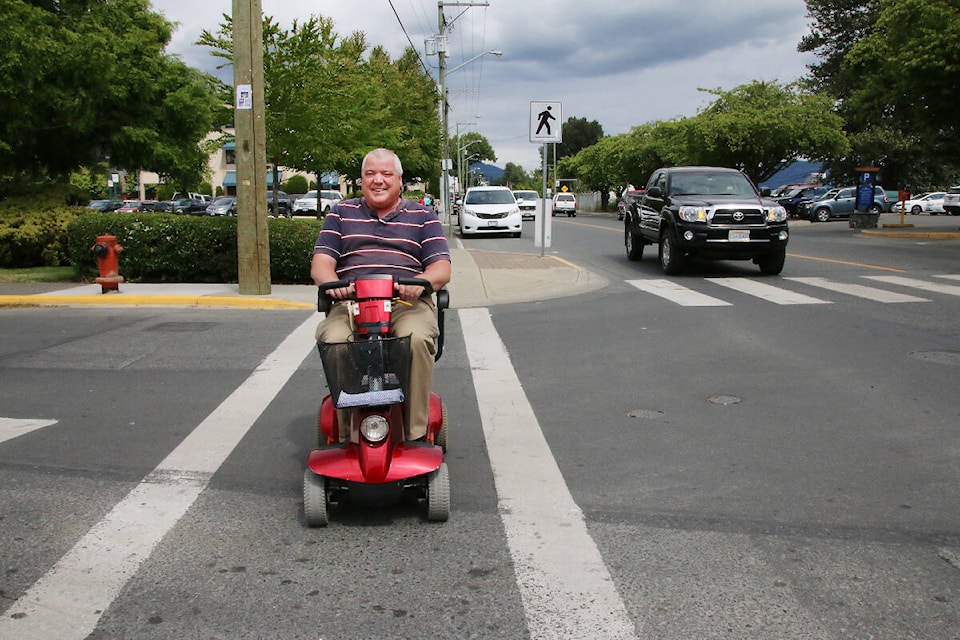New accessibility rules are being implemented by the provincial government. Local governors worry that it’s happening too fast and too unclear for them to properly do the work they’ve been ordered to do.
Regional Districts and other levels of local government have been mandated to conduct a consultation process with an all-local committee made up of some elected officials and some appointees who are knowledgeable about mobility challenges and other accessibility realities.
Per the Accessible BC Act, there is a deadline of Sept. 23 set by the provincial government for Regional Districts to:
1) Establish an Accessibility Committee;
2) Adopt an Accessibility Plan;
3) Have a public tool to receive feedback on Accessibility.
The Regional District of Bulkley-Nechako (RDBN) met to discuss the issue, and while the consensus was that adopting policies and putting access at the forefront of construction and logistics practices were good things for all, the process they had to follow, as stipulated by Victoria, was problematic in their view.
RDBN chair Mark Parker, the elected representative for Area D-Fraser Lake Rural, was conscientiously concerned. He said if they called a meeting tomorrow “if it’s me, I don’t even know where to start. What is this we’re doing? What are we supposed to plan? So is there more to this, then?”
He was backed up by Granisle mayor Linda McGuire.
“This is pretty vague at this point in time. If you were to sit me down and say ‘Do you want to be part of the accessibility advisory committee?’ I’d say what’s that? What’s our goal? What’s going to be expected other than downloading, again, from the provincial government?”
The downloading concern was brought up more than once in the discussion. While there was recognition at the governance table that making buildings and transportation methods accessible for those with movement disabilities would open opportunities for those people and also be helpful for all others, the process was getting no funding or staff contributions from the provincial government.
It would fall to this mandated volunteer committee and the staff of the RDBN and local municipalities to do the work required. There’s a financial cost to that staff time, plus an opportunity cost in that they have other duties not getting done while they do the work of the accessibility mandate.
So far, Nellie Davis, the RDBN’s manager of regional economic development is the lead staff person applying her time to this new project. She gave assurances to the RDBN directors that so far, the work was not impeding the regional district.
“At this time there are no requirements for local governments to spend money on particular infrastructure, or make changes to any existing infrastructure,” Davis said, and added that the three points they had to cover did not come with strings attached. “The process is meant to be living, so whatever the board decides to do to be in compliance by September can be reviewed as frequently as required to make sure we’re still meeting the needs of residents.”
Municipalities have to do their part, and her department had already heard from some of them, plus some affected institutions like local libraries, who were proactively interested in helping out on the committee.
The rules of the committee’s composition, though, also gave Regional District directors some pause. Judy Greenaway, director for Area C-Fort St. James Rural, noted that the size of the committee had to be between 7-12 people, and had to be a prescribed mix of elected representatives and appointees who were knowledgeable about mobility challenges. Even the maximum number was hardly enough people, Greenway said, to properly cover the unique points of each community in a district as vast and complex as Bulkley-Nechako.
Parker also drew on his experience with committees and public consultation and shook his head over the timelines.
“I’m not sure that’s a long enough time frame,” he said. “We’re talking going into summer trying to put a committee together, getting some meetings together, it all takes time. Looking at fall, 2023, I just don’t think that’s realistic. I don’t see it happening, to be honest…I think we’re a month to two months out from having a committee put together and having a first meeting, as it is, and then we hit the summer.”
Davis was hopeful that simply being underway would provide all the assurance the provincial government was likely to need to offer an extension. She also noted that there were agencies identified by the provincial government who were there to aid the discussion, such as topics that should be covered and philosophies to keep in mind, as the committee got underway.
The committee must be chaired and vice-chaired by rural representatives only, and Parker asked the seven of them at the RDBN table to consider volunteering, or they would be appointed. As much as the timelines and mandates seemed murky, it was a committee that was bound to be informative and rewarding in the end, it was agreed.
